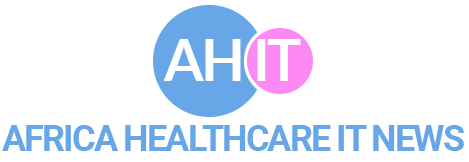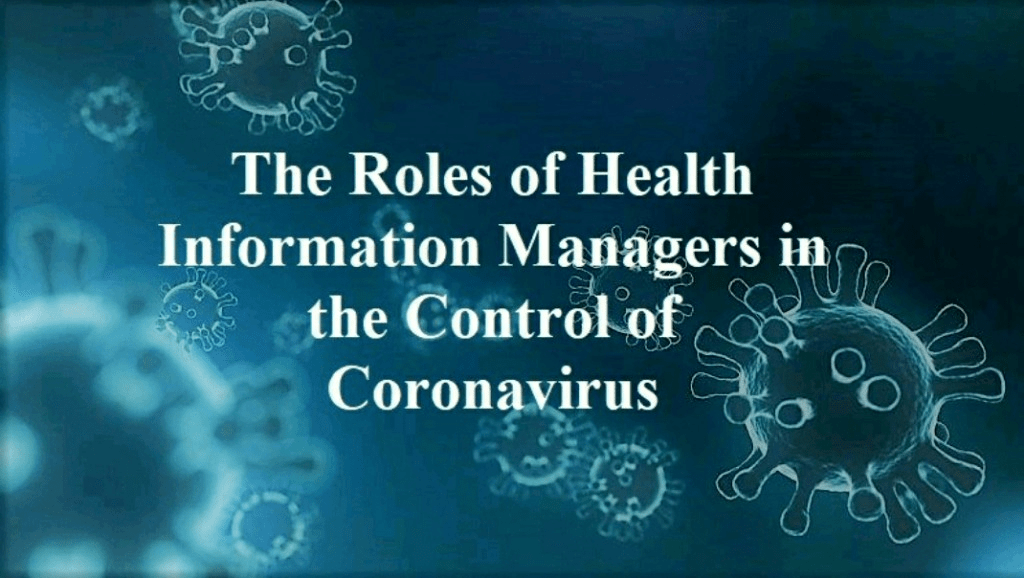By Dr. Raphael Akangbe. (CHCMgr, FCIML, DBA, PhD), Hosna Salmani (Healthcare IT)
In the current healthcare climate, panic and pandemonium prevail as deadly diseases like Coronavirus command public attention and the World Health Organization and the Centers for Disease Control (CDC) works around the clock to provide relevant guidance. The professionals working in areas such as Health Information Management (HIM), Health Information Technology (HIT) and Health Informatics typically don’t play a hands-on role in treating this pandemic disease, they are to play a major role in tracking diseases and deploying treatments.
Not only HIM professionals learning how to harness Big Data in the treatment and prevention of infectious and chronic disease, implementing telemedicine, and managing public health databases and registries, they are also increasingly are tasked with making sure that the protected health information (PHI) exchanged by these technologies is secure.
While this open data is invaluable to health information managers and health researchers, they all face some common hurdles ahead including how to keep patient data secure, how to protect patient privacy, and how to prevent dissemination of wrong information, that could negatively affect the round the clock efforts of health caregivers and alleviate fears that have gripped the hearts of the world, due to misrepresentation of the negative effects of Coronavirus.
Opportunities for Health Information Managers
Various technologies need to be deployed to help the efforts in the area of proper information dissemination. The use of the mobile-health application and other technological means to feed the populace right information is very essential.
The mobile health app will help in reducing reporting times of infections by seventy-five percent. Every test results will be scanned to tablets and uploaded to emergency databases, and field teams got text message alerts on their phones informing them of the results.
Big Data will be helped to track and detect Coronaviruss outbreaks, combining it with predictive analytics which can identify areas where prevention and awareness campaigns could be successful.
Big data which is the sole responsibility of Health Information Managers, has a huge potential to help fight not only Coronaviruss but other disease outbreaks,
There’s need to find a way to use technology on a large scale, using real-time data because time is of the essence.
Health Information Management professionals can participate in the management and analysis of coronavirus data and predict the resources and medicines needed for the coming months. This will be possible by having a database that is connected to servers in each health centers and hospital
Advantages of Database:
1) Follow up the number of patients and compare them with the past of each health center. This also provides an estimate of the number of carriers.
2) Estimation of hospitals’ need for equipment and Medicinal needs to beat coronavirus
3) Evaluate coronavirus coding and prevent unrelated codes from hospital
4) Extract Coronavirus Data (Management, Diagnostic, Pharmaceutical, Service Data)
5) Provide statistics, report and charts for hospitals and health center
6) Provides up-to-date statistics of ICU beds
7) Provides up-to-date statistics of healthcare providers
8) Provide up-to-date statistics of health services
9) Linkage of Laboratory Information System to Database and evaluation of blood test of patients for further studies
Access to the online electronic database without interference by the people will prevent error. Furthermore, the data should be available everywhere and everytime. Besides, financial data, insurance data and management data can provide a prediction of hospital and equipment costs.
Beyond Coronavirus
Wearable fitness trackers such as the latest Fitbit have been popular for several years now, but the next wave of health monitoring looks to be coming in the form of biosensors integrated into smartphones.
Health Information Managers are expected to harness every possible means in supporting the healthcare givers, in ensuring absolute precautions by not allowing this deadly disease to keep reoccurring through manual and electronic ways of disseminating personal hygiene information, not only to the patients and their relatives but also, to protect themselves.
The role of mobile health is also important in this area, and professionals can reduce the chance of developing the virus by designing applications to track suspicious and high-risk individuals, improve awareness and assess the risk of coronary heart disease.
HIM Concerns with Monitoring and Big Data
HIM professionals are playing a major role in how patient monitoring data is inputted, used, and stored. Often, the patient monitoring data is fed into electronic health records (EHRs), and there is some evidence that shows that physicians see patient-generated data as a very important tool in progressing in his successful treatment on the patient.
The records of patients who are only seen in the emergency department are often incomplete an issue that HIM professionals can help rectify.
Health Information Managers need strive to ensure quality improvement in health care practices. Hence, it is important for us to be aware of advances in Health Information Technology (HIT) as they relate to speciality areas, including infectious disease. Clinicians and public health professionals have made great strides in incorporating into infectious disease practice the various technology enhancements on the market today, resulting in improved delivery of clinical and public health services. Learning how to integrate advances in health IT with more traditional practices to improve quality and promote a culture of health care excellence is a cornerstone of HIM practice. Health Information Managers can accomplish this by understanding how policy decisions regarding health IT impact the quality of health care and learning how the best available technological resources can be applied to clinical practice. It is also important to note that as these applications continue to evolve in the next few years in support of quality improvement, we will need to understand when and where these technologies can be used to optimize the overall process and delivery of excellent health care.
Health Information Management offers great promise in the arena of infectious disease and microbiology. We have seen over the years the continued use and misuse of antimicrobials, and we have seen resistant bacterial strains emerging because of antibiotic misuse. Thus, technologies to better manage and track best practices in infectious disease are welcome. This column will address some key considerations regarding the use of technology in support of infectious disease best practices, in both the public health and clinical realms.
Health Information Management professionals play vital roles by providing services in all aspects of both manual and digital health records management including data collection and data quality management, integrity, standards, disclosure, coding, disposition, and privacy of health information.
Health Information Managers perform detailed analysis of the information in the health record to facilitate health care delivery, patient safety and decision support. They play a role in ensuring the confidentiality of health information within the patient record and are advocates of the patients right to private, secure and confidential information. HIM professionals are essential in quality programs and provide guidance on documentation, communication, eHealth implementation, EHR infrastructure, and policy issues.
Health Information Managers are expected to care for patients by caring for their medical data. They are responsible for the quality, integrity, and protection of patient’s health information.
In addition, the following are the roles of HIM in the control of Coronavirus:
1) Capturing of real-time data, that will not mislead the medical team
2) Securing and maintaining patient’s data, so that it is not disclosed to unauthorized persons.
3) Critical analysis of every patient data to facilitate effective treatments
4) Dissemination of right data/information, such that will not aggravate panicks amongst people.
5) Using faster means (technology) to aide health information exchange, all over the world.
6) Avoidance of transporting patient’s data physically, such that could promote contracting diseases in the cause of physical transmission.
7) Ensuring that all data collected is protected against hijackers, that could turn the information into a means of blackmailing certain individuals.
8) Use of PPE, to safe themselves and other health care workers, during their contact with infected patients.
9) Creating a positive environment for patients to believe that any care rendered will be effective and
10) Feeding the entire world with the right information that will not promote fear, mental illness, psychological imbalance etc.
Any part of this information can be used, through permission, to educate and promote health practice.



